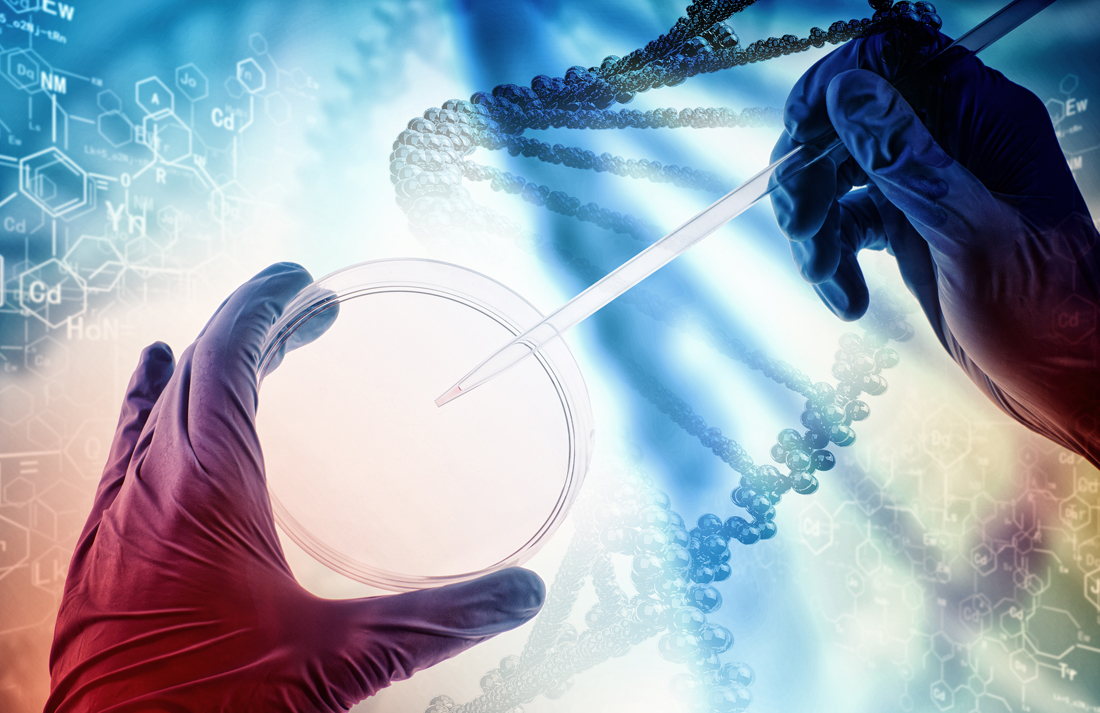The Life Sciences Report: Joseph, your principal technology platform at Inovio is the DNA-based vaccine or immunotherapy. The traditional immunization platform involves giving a patient an attenuated virus, bacterium or antigen, and waiting a few weeks for a titer of antibodies to develop. What is the difference between the traditional immunization platform and Inovio's DNA immunization platform?
Joseph Kim: Instead of using whole viruses, or weakened forms or parts of viruses, we use the DNA, or genetic blueprint, that encodes for the antigens (proteins) of our choice. We design all our products in the computer, using a genetic sequence database. We immunize patients with engineered DNA sequences that will turn into the antigens of choice in a natural process in the patient's own cells and body.
TLSR: What are the advantages of synthesizing the antigens in the cells?
JK: First, you can engineer the genetic sequences for the specific antigen. All DNA sequences are made up of four nucleotides, each composed of nitrogenous bases that we abbreviate as A, C, T and G (adenine, cytosine, thymine and guanine). Our products are engineered synthetic sequences of these bases that can help generate better immune responses in people—help make what's naturally occurring work better. We apply many techniques to create the genetic sequence; collectively we call the technology Synthetic Consensus, or SynCon.
The bottom line is that we can generate more cross-protection, or universal protection, against different, varying and mutating strains of a pathogen. We can also help break immune tolerance when it comes to cancer immunotherapies and vaccines.
TLSR: One of the hallmarks of SynCon technology is that it can produce a very powerful T-cell response, which can fight infection and kill tumor cells. How is it that you can generate this T-cell response, in addition to the antibody response?
JK: The T-cell response is what nature—the immune system—was designed to do. The pillar T-cell responses can only be generated if the antigen of choice is made in the cell, or taken up and processed inside the cell.
Inovio's technology emulates, or even bests, the best of the viral vector delivery systems without side effects and without baggage.
There are only two ways to practically generate T-cell responses, especially CD8-positive (CD8+) killer T cells, which help the immune system clear tumor cells. One way is to use a vector to deliver a gene—live or attenuated virus delivery into the cells that then churn out the antigens inside the cells. The second way is through Inovio's SynCon technology, which emulates a virus without all of the baggage of a viral delivery system. We insert engineered plasmids (circular pieces of DNA) via our electroporation delivery system into the cells. Our electroporation technology involves the use of controlled, millisecond electrical pulses to create temporary pores in the cell membrane, which allows dramatic cellular uptake of the synthetic DNA vaccine. This is of great importance, since all of the antigen manufacturing occurs inside the cell. These expressed antigens, which are proteins, are then chopped up into different peptides and presented to the T cells in a way that the T cells can recognize. It's like providing the right software application to the T-cell hardware.
The problem with viral vectors is that the immune system will build resistance, or antibody responses, against the viruses themselves, which will diminish or turn off the effects of viral vectors. Inovio's technology emulates, or even bests, the best of the viral vector delivery systems without side effects and without baggage.
TLSR: Is this a personalized approach to therapeutics and prophylaxis?
JK: In a sense it is, in that personalization speaks to the safety nature of our technology. The therapy is pure DNA in pure water delivered with electric pulses into the tissue, and the antigen is manufactured in a patient's own cells in the same way other proteins are made in their cells. In that way, the results are very individualized.
But I don't want to say it's personalized, because we are not taking a patient's own cells out of the body and processing them, as with Provenge (sipuleucel-T; Dendreon Corp. [DNDN:NASDAQ]) or with chimeric antigen receptor (CAR) T-cell technology. We are using off-the-shelf DNA products.
TLSR: Joseph, you mentioned electroporation. How powerful is the response generated by non-electroporated immunization versus using electroporation?
JK: We've done experiments in which we compared our SynCon DNA vaccines against plain-vanilla DNA vaccines that Merck & Co. Inc. (MRK:NYSE) and others have used. Our SynCon products, on average, can generate immune responses in animals that are five- to tenfold stronger. We've published these results.
In people, what really makes this technology clinically and medically useful is the electroporation delivery system. As soon as we understood its importance, we wanted to own the electroporation technology. That's why Inovio has built what we think is the most dominant patent and technology position around that delivery system.
In people, what really makes this technology clinically and medically useful is the electroporation delivery system.
The proof is in the pudding. Our positive Phase 2 results with VGX-3100 against human papillomavirus (HPV) infections—the first undeniable Phase 2 success in DNA immunotherapy and the vaccine field—speaks for itself. We expect those results to translate to other programs in our pipeline. After years of experimentation, we found that electroporation was the best way to deliver VGX-3100, and DNA-based immunotherapies broadly speaking. The contents of the vaccines matter, and the delivery enables the contents to work. It's a one-two punch that has resulted in impressive clinical data and results in various trials.
TLSR: Inovio has a platform technology that is indication-agnostic. The best alternative examples of indication-agnostic technologies that I can think of are the antisense and RNA interference (RNAi) platforms. The limitations with antisense and RNAi are that they currently only deal with single-gene diseases, while most diseases are caused by multiple genes. Do you know if there is a limit to the number of genes you can insert into a cell, and the number of antigens you can cause that cell to express?
JK: In theory, we can address up to a dozen genes. In practice, our immune therapies would typically target two to four different gene products, which would allow us to target those antigens simultaneously to bring about the best protection or therapeutic effects.
A few years back we were tasked with generating a smallpox vaccine for the U.S. military. The smallpox virus, which has been eradicated from regular circulation, devastated Europe a couple times. When the smallpox virus infects a person, about 2,000 genes are expressed, and all of those gene products trigger the immune system. Practically, we could probably deliver several hundred antigens to trigger the immune system. We selected 12 different genes to deliver in a single injection, which we tested in small animals and also in monkeys. We were able to completely protect those monkeys from lethal smallpox challenge.
Since you referenced antisense and RNAi, I would like to address the delivery system. As you know, antisense and RNAi both have to be delivered to the site of therapeutic interest. For the most part, Alnylam Pharmaceuticals Inc. (ALNY:NASDAQ) and its RNAi platform only address orphan diseases and diseases of the liver, because the company's lipid formulations and other delivery systems are limited. For Alnylam's products to work for, let's say, prostate cancer, the therapy would have to be delivered to the specific area. In our case, we can deliver the therapy locally into the skin of a patient's arm. The antigens are generated, and the T cells are deployed to the sites and tissues of interest. We don't have to direct the T cells to the cervical, prostate or breast tissues. The cells just get into traffic on the immune highway, circulate very fast, and home in on the area where they are needed. I think that, as a platform value, the DNA vaccine has more potential value overall than RNAi or antisense, which also have strong value and potential.
TLSR: Have you seen any evidence of immunotoxicity with these DNA immunizations?
JK: Actually, the safety and tolerability profile has been excellent. We have dosed more than 600 patients across different trials, with 1,300 separate administrations. We haven't seen any serious adverse events related to SynCon-based products.
With regard to the Phase 2 trial of VGX-3100, the only reaction that's been higher statistically in the treated group versus the placebo group was the injection site reaction. But that's what you want to see with a vaccine or immunotherapy. It means the product is working. There has been no remarkable difference between placebo, which is injected water, versus the product, which is DNA plus water.
The contents of the vaccines matter, and the delivery enables the contents to work. It's a one-two punch that has resulted in impressive clinical data and results in various trials.
Even in animals, we haven't seen any safety issues or indications of hyperimmunity. I think the reason is that we are just delivering gene-based antigens, and only that. We don't use any of the adjuvants, chemicals or additives that go into current vaccines. I just got my flu shot. My arm hurt for four days. This is a reaction to the alum adjuvant in the vaccine. If you stick aluminum in your body, it's going to react, and it's going to hurt. We don't have any adjuvants, and this is a huge potential advantage for the products and platform.
TLSR: On July 23, Inovio delivered results on its 150-patient, Phase 2, double-blind, placebo-controlled trial of VGX-3100 (synthetic constructs of DNA plasmids targeting antigenic proteins expressed by E6 and E7 oncogenes of HPV subtypes 16 and 18) for precancers and HPV infection of the cervix. These patients had biopsy-proven cervical intraepithelial neoplasia, grades 2/3 (CIN2/3) or 3 (CIN3), which are precancer indications. You showed statistical significance in both regression to CIN1 or regression to no dysplasia at all, as well as in complete viral clearance from the tissues after 36 weeks. You must now perform a Phase 3 pivotal study. When will this begin?
JK: We are now preparing for the end-of-Phase 2 meeting with the U.S. Food and Drug Administration (FDA), which will trigger the Phase 3. We would likely start the Phase 3 studies in early 2016, using the worst-case scenario, because we like to underpromise and overdeliver. We want to give the most conservative timeline possible, but there is a strong probability that we may be able to start the Phase 3 in late 2015.
As far as the number of patients, we feel it won't need to be a tremendously large Phase 3 study—perhaps 200–300 patients—because the p-values from the Phase 2 study were so low (the lower the p-value, the greater the statistical significance). This is just a rough estimate.
TLSR: You raised about $60 million ($60M) back in early March. Can you do a Phase 3 trial with that, or will you require a partner?
JK: We have the capability in-house to execute the Phase 3. Will we partner? This goes back to your platform question, because we have the opportunities and dilemmas of the plenty, which means we've demonstrated that our platform works through our Phase 2 data, and we have a coordinated pipeline of products that target very important cancers like prostate cancer, which we licensed out to Roche Holding AG (RHHBY:OTCQX). We will also start a breast, lung and pancreatic cancer study later this year with INO-1400. We're exploring several potential value-enhancing partnerships with multiple big pharma parties right now, and we remain very open to a partnership that's a win-win for the big pharma and for us.
TLSR: Do you know yet whether you will have to do a confirmatory Phase 3 study, or will that depend on the p-value of your first Phase 3?
JK: That really depends. We produced very convincing data in Phase 2, and if we can replicate that in a larger Phase 3 study with similar data, I feel that should be sufficient for us to go to registration (filing the new drug or biologic application with the U.S. Food and Drug Administration [FDA]). But the FDA has the final say on this.
TLSR: Other platform companies that are indication-agnostic, such as Alnylam and antisense company Isis Pharmaceuticals Inc. (ISIS:NASDAQ), have a hub-and-spoke business model, where they license out pipeline products to large pharmas or biopharmas that have experience in a certain specialty area. It might make sense to have a partner for VGX-3100 that has its foot in the door of the obstetrics/gynecology office, which is a very large primary-care community. Your comment?
JK: Even if we take on the Phase 3 studies ourselves, we don't envision building and deploying our own sales and distribution forces in the near future. We would likely partner with the best on-the-ground—experienced folks that have those channels already covered. Economics are important, but sales and distribution capabilities are very important in selecting the suitable partner, and we want to create the maximum value in this program before we partner.
TLSR: How large is the cervical dysplasia market?
JK: It's quite large. Just in our primary markets of the U.S. and, let's say, the top five countries in the European Union (EU5), there are more than 600,000 new incidences of CIN2/3 or CIN3 per year. If you add the rest of the world, you can multiply that number of cases by five or six. It's a market with multibillion-dollar potential in just the CIN2/3 and CIN3 areas.
We didn't test the regression of low-grade dysplasia with VGX-3100, but some trends indicated we may be able to treat these patients. If you include that population, that's an additional 2.8M new diagnoses every year in the U.S. and EU5. That would require a larger study, which would likely be taken on with a partner.
As a platform value, the DNA vaccine has more potential value overall than RNAi or antisense.
In April of this year, Roche got its cobas HPV Test approved by the FDA as a first-line primary screen. I think that assay will replace the Pap smear in a short amount of time; the Pap has served women very well over the years, but it's not that accurate. And how useful is early diagnosis of HPV infection when you don't have the appropriate treatment regimen to deal with that early diagnosis? I think market trends and advancement in diagnostics all point toward an increased potential therapeutics market for VGX-3100.
TLSR: Having licensed two programs to Roche, with INO-1800 for hepatitis B and INO-5150 for prostate cancer, back in September 2013, you have an established relationship with the company. The cobas HPV Test and VGX-3100 could work quite well together, couldn't they?
JK: Certainly they would. And yes, relationships do matter. We already have those two relationships with Roche, but other companies providing women's healthcare have boots on the ground. Companies in the oncology space are also quite interested. Last but not least, companies that already have preventive vaccines on the market, like Merck with Gardasil (recombinant HPV vaccine [types 6, 11, 16, 18]) and GlaxoSmithKline (GSK:NYSE) with Cervarix (recombinant HPV bivalent [types 16 and 18]) are logical partners. A therapeutic position post-HPV infection would complete their cradle-to-grave portfolio for HPV diseases. There are many potential suitors at this point.
TLSR: I'd like to move on to INO-1400. It's a potential universal cancer therapy targeting human telomerase reverse transcriptase (hTERT), which is expressed in genes in more than 85% of cancer types. You have said you are "most excited" about this program. Do you still have a Phase 1 study planned for H2/14?
JK: Yes; we'll be on time for the trial. From the perspective of INO-1400's potential utility across multiple important cancer types, I'm quite excited about the potential of this product. Our first trials are in three very important cancer indications—breast, lung and pancreatic cancers—because hTERT is most prevalent in these.
We have designed the Phase 1 as three mini-trials targeting 18 patients in each of the three cancer categories, for a total of 54 patients. We'll launch in the next month or so. Our primary goal is very simple. First, is the therapy safe? I think it will be, based on what we've seen with other Inovio products and approaches. Second, can we generate CD8+ killer T cells to the level we have seen in our Phase 2 cervical dysplasia studies? If the answer is yes, then we will go into Phase 2b studies in each of these indications very rapidly, most likely in combination with a checkpoint inhibitor molecule, and likely in partnership. I feel that will be the launching point for all of our immuno-oncology programs.
TLSR: I'd be remiss if I didn't ask you about your Ebola and Marburg filovirus broad-spectrum program. I know you can't go anywhere now without people asking you about this, because it's the topic du jour. In a press release dated Sept. 24, 2014, Inovio announced it would start a trial with partner GeneOne Life Science Inc. (011000:KSE), a company in which you hold a minor equity interest. Is this product eligible for an expanded access program, which is what we used to call compassionate use exemption?
JK: Yes. I think it's really beyond that. As we've seen with MAPP Pharmaceuticals' (a unit of Allergan Inc. [AGN:NYSE]) product ZMapp (three chimeric [humanized] monoclonal antibodies manufactured in plants, specifically Nicotiana), the only time regulatory agencies throw out all the standard practices is when there's either a pandemic or a potential global health threat. You saw that with the influenza A virus subtype H5N1 outbreak, as well as with severe acute respiratory syndrome (SARS). With the Ebola outbreak spreading beyond experts' expectations, and with healthcare workers becoming infected, most of the rules are out the door. I think as long as you don't do any harm, there will be urgency and an accelerated initiative to get therapies out there, deployed for field use, and quickly approved in a way that doesn't exist in the traditional regulatory system.
TLSR: Joseph, was this an indication that you had intended to develop before this crisis?
JK: I have to be honest: Ebola wasn't something that we had invested a lot of money or effort in. But we decided, a couple of years ago, to test our product development platform technology in some of the hardest pathogens and diseases. We've been developing preventive and therapeutic vaccines in animal models for Ebola, Marburg, Middle East respiratory syndrome (MERS) and pandemic flu, to name a few. We've published those results in peer-review scientific journals. But in a normal world, there is really no commercial marketplace for an Ebola product. As a for-profit company with shareholders, it wasn't a path that we were going after.
We would be remiss if we didn't apply our potentially life-saving technology to help to curb this outbreak.
But now we would be remiss if we didn't apply our potentially life-saving technology to help to curb this outbreak, which has already claimed more than 4,500 lives. Certainly, it's going to claim more lives before it comes down. So, with our manufacturing partner, we are willing to spend our own money to bring this product into clinical safety and immunogenicity testing. I also believe we will be able to muster additional government and non-governmental organization support to further advance this product as the need arises.
TLSR: How has this vaccine performed in preclinical models?
JK: We already have very strong protection data—100% protection from death following exposure of the virus to immunized guinea pigs and mice; as well as morbidity protection, as assessed by weight loss measurements. We feel that we have one of the most applicable products as a vaccine, and perhaps even as a therapy, to address this problem.
TLSR: ZMapp is a cocktail of three antibodies, but it would also be nice to have a T-cell response in Ebola virus disease, wouldn't it?
JK: Yes. Antibodies are very important. In some viruses, antibodies are sufficient on their own. But with highly virulent viruses like Ebola, you want the dual action. It's not mutually exclusive. You want neutralizing antibodies, but also the ability to generate killer T cells to help to get rid of the virus as it infects cells.
TLSR: I have heard you say that you expect checkpoint inhibitors, which attempt to unmask tumor cells from the immune system, will be the center of attention at the 2015 American Society of Clinical Oncology (ASCO) meeting. What is your involvement with checkpoint inhibitor technologies?
JK: We're not directly involved in checkpoint molecule development on our own, but it makes a lot of sense for our cancer vaccines and therapies to be used in combination with the checkpoint inhibitors. That's also likely the plan with INO-5150, our prostate cancer therapy with Roche. Our study will evolve as a monotherapy, but also in combination with Roche's checkpoint inhibitor molecule.
This field is heating up. Merck got its PD-1 inhibitor, Keytruda (pembrolizumab), approved on Sept. 4. It was granted accelerated approval by the FDA. Roche, Bristol-Myers Squibb Co. (BMY:NYSE) and AstraZeneca Plc (AZN:NYSE), through its oncology unit MedImmune, are not far behind. I expect those three companies to have their own PD-1 and PD-L1 checkpoint inhibitor therapies approved in the next 12 months. Citibank analyst Andrew Baum is already predicting this to be a $24 billion field. Probably half a dozen products from other companies are hot on the trail as well. There will be multiple products on the market for us to utilize in combination therapy, to push forward an active cancer therapy using our T-cell-based technology.
What these checkpoint inhibitor clinical studies have shown is that patients who do not respond to treatment with these molecules tend to have minimal or low-level T-cell responses to the target cancer. They are nonresponders. So it's not a big jump to combine T-cell-generating therapies with checkpoint inhibitors in what could be a great immunotherapeutic combination. Perhaps these ideas can take 20% or 30% efficacy up to 70% or 80%. As long as we're on one side of this equation, I think Inovio and its shareholders will do extremely well going forward.
TLSR: Joseph, it's been a pleasure.
JK: Thank you very much.
 Joseph Kim was appointed president and CEO of Inovio Pharmaceuticals in June 2009. Dr. Kim cofounded VGX Pharmaceuticals, a synthetic vaccine company, in 2000, to develop intellectual property related to immunotherapeutics licensed from the University of Pennsylvania. He led that company for nine years and acquired Inovio Biomedical in 2009 to form Inovio Pharmaceuticals. Previously, Dr. Kim was a senior vaccine developer at Merck & Co., where he successfully led efforts in manufacturing and process development for several FDA-approved products for hepatitis, and developmental vaccines and therapeutics for HIV/AIDS. Dr. Kim earned a bachelor's degree in chemical engineering and economics from the Massachusetts Institute of Technology, where he was a U.S. Senate Honors Scholar. He holds a Ph.D. in biochemical engineering from the University of Pennsylvania, and a master's degree in business administration (finance) from the Wharton School. Dr. Kim has published more than 100 peer-reviewed scientific papers, holds numerous patents and sits on several editorial boards and review panels.
Joseph Kim was appointed president and CEO of Inovio Pharmaceuticals in June 2009. Dr. Kim cofounded VGX Pharmaceuticals, a synthetic vaccine company, in 2000, to develop intellectual property related to immunotherapeutics licensed from the University of Pennsylvania. He led that company for nine years and acquired Inovio Biomedical in 2009 to form Inovio Pharmaceuticals. Previously, Dr. Kim was a senior vaccine developer at Merck & Co., where he successfully led efforts in manufacturing and process development for several FDA-approved products for hepatitis, and developmental vaccines and therapeutics for HIV/AIDS. Dr. Kim earned a bachelor's degree in chemical engineering and economics from the Massachusetts Institute of Technology, where he was a U.S. Senate Honors Scholar. He holds a Ph.D. in biochemical engineering from the University of Pennsylvania, and a master's degree in business administration (finance) from the Wharton School. Dr. Kim has published more than 100 peer-reviewed scientific papers, holds numerous patents and sits on several editorial boards and review panels.
Want to read more Life Sciences Report interviews like this? Sign up for our free e-newsletter, and you'll learn when new articles have been published. To see a list of recent interviews with industry analysts and commentators, visit our Streetwise Interviews page.
DISCLOSURE:
1) George S. Mack conducted this interview for The Life Sciences Report and provides services to The Life Sciences Report as an independent contractor. He or his family own shares of the following companies mentioned in this interview: None.
2) Inovio Pharmaceuticals Inc. paid Streetwise Reports to conduct, produce and distribute the interview.
3) Dr. J. Joseph Kim had final approval of the content and is wholly responsible for the validity of the statements. Opinions expressed are the opinions of Dr. J. Joseph Kim and not of Streetwise Reports or its officers.
4) The interview does not constitute investment advice. Each reader is encouraged to consult with his or her individual financial professional and any action a reader takes as a result of information presented here is his or her own responsibility. By opening this page, each reader accepts and agrees to Streetwise Reports' terms of use and full legal disclaimer.
5) From time to time, Streetwise Reports LLC and its directors, officers, employees or members of their families, as well as persons interviewed for articles and interviews on the site, may have a long or short position in securities mentioned and may make purchases and/or sales of those securities in the open market or otherwise.




































